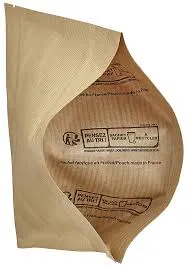- Afrikaans
- Albanian
- Amharic
- Arabic
- Armenian
- Azerbaijani
- Basque
- Belarusian
- Bengali
- Bosnian
- Bulgarian
- Catalan
- Cebuano
- chinese_simplified
- chinese_traditional
- Corsican
- Croatian
- Czech
- Danish
- Dutch
- English
- Esperanto
- Estonian
- Finnish
- French
- Frisian
- Galician
- Georgian
- German
- Greek
- Gujarati
- haitian_creole
- hausa
- hawaiian
- Hebrew
- Hindi
- Miao
- Hungarian
- Icelandic
- igbo
- Indonesian
- irish
- Italian
- Japanese
- Javanese
- Kannada
- kazakh
- Khmer
- Rwandese
- Korean
- Kurdish
- Kyrgyz
- Lao
- Latin
- Latvian
- Lithuanian
- Luxembourgish
- Macedonian
- Malgashi
- Malay
- Malayalam
- Maltese
- Maori
- Marathi
- Mongolian
- Myanmar
- Nepali
- Norwegian
- Norwegian
- Occitan
- Pashto
- Persian
- Polish
- Portuguese
- Punjabi
- Romanian
- Russian
- Samoan
- scottish-gaelic
- Serbian
- Sesotho
- Shona
- Sindhi
- Sinhala
- Slovak
- Slovenian
- Somali
- Spanish
- Sundanese
- Swahili
- Swedish
- Tagalog
- Tajik
- Tamil
- Tatar
- Telugu
- Thai
- Turkish
- Turkmen
- Ukrainian
- Urdu
- Uighur
- Uzbek
- Vietnamese
- Welsh
- Bantu
- Yiddish
- Yoruba
- Zulu
Creative Approaches to Beer Packaging Design for Maximum Shelf Appeal
The Art and Science of Beer Packaging Design
When it comes to beer, the experience begins long before the first sip. The packaging design plays a crucial role in capturing the attention of consumers, conveying brand identity, and, ultimately, influencing purchase decisions. In a saturated market filled with myriad options, the challenge for breweries lies not only in crafting high-quality brews but also in designing packaging that resonates with their target audience.
The Importance of First Impressions
In the world of consumer goods, first impressions matter immensely. Research indicates that a significant percentage of purchase decisions are made at the point of sale, often driven by visual appeal. For breweries, this means that the can or bottle must stand out on crowded shelves. Effective packaging design uses color, shape, texture, and imagery to draw consumers in. Bright colors can evoke feelings of excitement, while muted tones may suggest sophistication. Shapes and sizes also contribute; for instance, unique bottle shapes can create a memorable silhouette that lingers in the mind of a consumer.
Brand Identity Through Design
Beer packaging serves as a visual manifestation of a brand's identity. A brewery's story, values, and ethos can be communicated through thoughtful design elements. For example, a craft brewery focusing on sustainable practices may opt for eco-friendly materials and minimalist design, showcasing a commitment to the environment. Similarly, a brewery inspired by its regional roots may incorporate local symbols or landmarks in its packaging.
Typography is another critical aspect of beer packaging design
. Bold, playful fonts may evoke a sense of fun and adventure, while elegant scripts could align with a more refined image. By selecting the right typography, breweries can effectively communicate their personality and values, inviting consumers to form a deeper connection with the brand.beer packaging design

Cultural Influences and Trends
Packaging design is also heavily influenced by cultural trends and consumer preferences. The rise of the craft beer movement has led to an explosion of creativity in packaging. Breweries are now experimenting with artistic and unconventional designs to differentiate themselves from mass-market products. From whimsical illustrations to retro themes, the influence of art movements can be seen in contemporary beer packaging.
Furthermore, trends such as minimalism and nostalgia are often reflected in design choices. Minimalist packaging, characterized by clean lines and a focus on essential information, can convey modernity and sophistication. In contrast, designs that evoke nostalgia may appeal to consumers' emotions, tapping into memories of simpler times and fostering a sense of comfort.
Sustainability in Packaging
Another growing consideration in beer packaging design is sustainability. As awareness about environmental issues increases, consumers are becoming more discerning about the products they choose. Many breweries are responding by adopting sustainable packaging practices, such as using recycled materials or designing for recyclability. This not only appeals to eco-conscious consumers but also enhances the brand's reputation as a responsible and forward-thinking entity.
Conclusion
Beer packaging design is much more than a decorative façade; it is an essential element of branding and consumer engagement. By creating visually appealing, meaningful, and sustainable packaging, breweries can effectively convey their identity and values, attracting consumers in a competitive market. As the industry continues to evolve, one can expect that the art and science of beer packaging will also advance, reflecting changing tastes, cultural trends, and a commitment to sustainability. Ultimately, the journey of a beer begins with its packaging, making it a vital aspect of the overall brewing experience.













